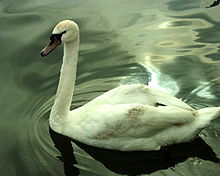Mr. Doppler in a circle
 A tuning fork is moving in clockwise direction on a circle centered at origin of radius
2
m
with speed
1
2
5
m
/
s
. Find the coordinates
(
a
,
b
)
of the tuning fork when the stationary observer at
(
1
,
3
)
hears maximum frequency.
A tuning fork is moving in clockwise direction on a circle centered at origin of radius
2
m
with speed
1
2
5
m
/
s
. Find the coordinates
(
a
,
b
)
of the tuning fork when the stationary observer at
(
1
,
3
)
hears maximum frequency.
Select a 6 + b 6 .
D e t a i l s
Velocity of sound = v s = π 1 0 0 0
This problem is originally part of set Mechanics problems by Abhishek Sharma .
Try more problems here .
This section requires Javascript.
You are seeing this because something didn't load right. We suggest you, (a) try
refreshing the page, (b) enabling javascript if it is disabled on your browser and,
finally, (c)
loading the
non-javascript version of this page
. We're sorry about the hassle.
2 solutions
I misread the question, and thought (-1,1 ) was the answer :(.
My calculations !!!! argh ! :(
Nicely done.
I over-thought this problem, and so I spent way too long on it, only to get the wrong answer. The original level is too high, and so it's misleading :/ Otherwise, I would have solved this almost instantly without having to do complicated calculations.
Log in to reply
Many people selected 2 as the answer which led to increase in the rating of this problem. I agree that it is not a Level 5 problem.
Why doesnt my ans came exactly 8?
I did like this.
For the position of tangent , the point of contact is given by ( a , b ) .
So We know, equation of tangent = y = m x + a 1 + m 2
⟹ 3 = m + 2 + 2 m 2
⟹ 9 + m 2 − 6 m = 2 + 2 m 2 \
⟹ m 2 + 6 m − 7 = 0
⟹ ( m − 1 ) ( m + 7 ) = 0
By drawing the figure we will know that we need an equation with Negetive slope but positive intercepts,
⟹ m = − 7 ⟹ y = − 7 x + 2 1 + 4 9
⟹ y = − 7 x + 1 0
⟹ y 2 = ( 1 0 − 7 x ) 2
⟹ x 2 + ( 1 0 − 7 x ) 2 = 2
⟹ 2 5 x 2 − 7 0 x + 4 9 = 0
⟹ x = 5 7 , y = 5 1
⟹ x 6 + y 6 = 5 6 7 6 + 1
≈ 8
Why do i need to approximate in this case?
The clue is: the path of the sound wave to the observer must be tangent to the circular path to attain maximum frequency.
Brilliant question
Follow these steps,
1 . F i n d t h e p o s i t i o n o f f o r k w h e n p a t h o f s o u n d w a v e i s t a n g e n t i a l t o c i r c l e a n d t o w a r d s t h e o b s e r v e r ( n o t a w a y f r o m o b s e r v e r ) i t w i l l b e ( − 1 , 1 ) b u t t h i s i s n o t ( a , b ) a s ( a , b ) i s p o s i t i o n w h e n o b s e r v e r h e a r s t h e s o u n d . ( a n s w e r V w i l l n o t b e ( − 1 ) 6 + ( 1 ) 6 = 2 ) 2 . F i n d t i m e t a k e n b y w a v e t o r e a c h t o o b s e r v e r b y d i v i d i n g d i s t a n c e b / w ( − 1 , 1 ) & ( 1 , 3 ) b y v e l o c i t y o f s o u n d . t = 1 0 0 0 / π ( 3 − 1 ) 2 + ( 1 + 1 ) 2 = 5 0 0 π 2 s e c 3 . F i n d a n g l e c o v e r e d b y f o r k d u r i n g t i m e t , θ = ω t = r v t = 2 1 2 5 × 5 0 0 π 2 = 4 π L e t ( a , b ) = ( 2 cos α , 2 sin α ) α = 4 3 π − 4 π = 2 π ( a , b ) = ( 2 cos α , 2 sin α ) = ( 0 , 2 ) ⇒ a 6 + b 6 = 0 + 8 = 8